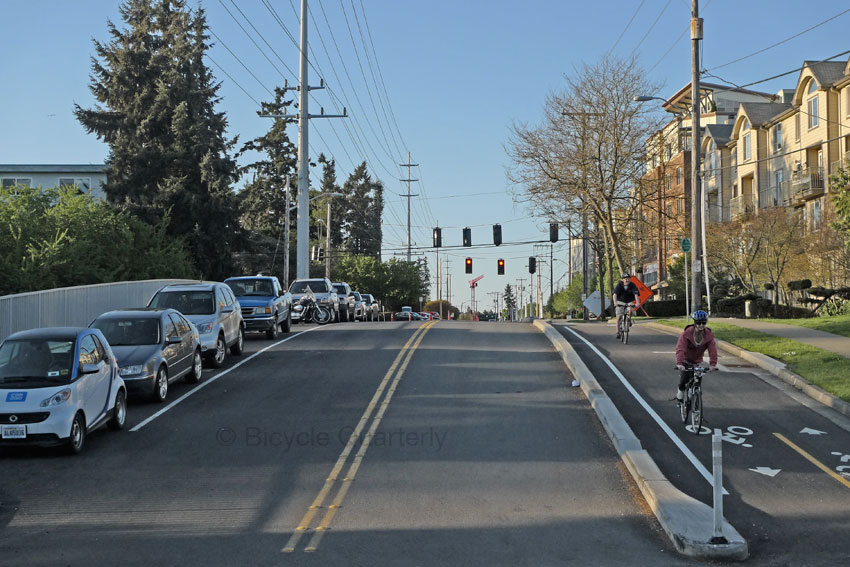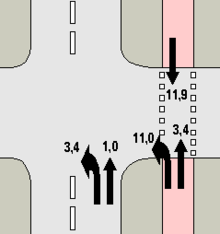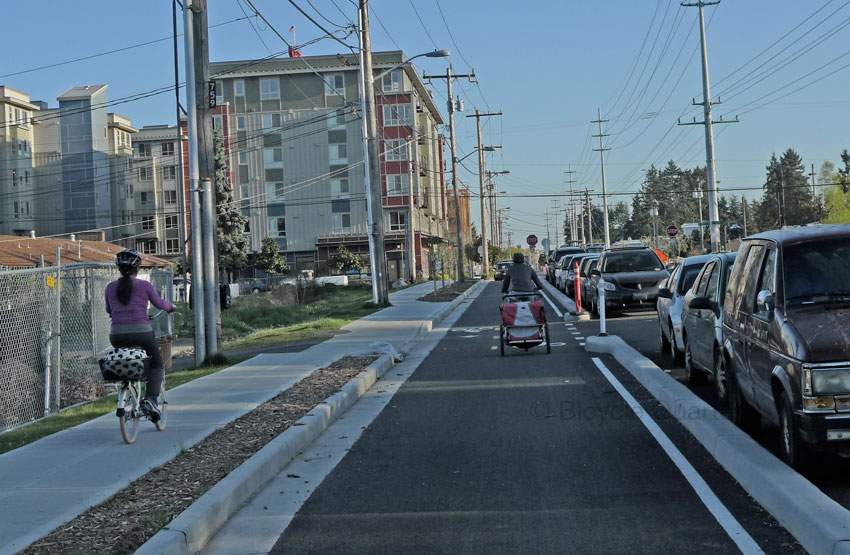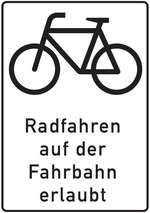Separated Cycle Paths – A Summary

When I criticized the new “cycle path” in Seattle – the first of many that the city plans to install – I was surprised by the number of comments (more than 260), but even more about how much agreement there is between the proponents and opponents of separating cars and bikes. Since this is an important subject, I am summarizing the “take-home message” here:
Bad design: The commenters from all over the world almost unanimously agreed that the path I showed (above) is poorly designed. One Danish reader wondered whether it was an old path, since putting cyclists on the wrong side of traffic has been abandoned in Europe. (Unfortunately, it’s brand-new, and considered a prototype for future paths.)

Separate paths are less safe: Numerous people posted links to safety studies. There appears to be general agreement that separated cycle paths are less safe at intersections. Data from Berlin and Denmark show a marked increase of cyclist (and pedestrian) injuries at intersections after cycle paths were put in. (The results were adjusted for the increase in ridership.) The graphic above shows the relative risks for cyclists depending on where they are traveling. The most dangerous path is on the wrong side of the street. The safest is on the street.
(If you want to verify the above, check out this bef0re-and-after study from Copenhagen, as well as this study from Agerholm and this one from Copenhagen. The official Copenhagen study concluded: “The cycle tracks have resulted in increases of accidents and injuries of 9-10%.”)
[youtube=http://www.youtube.com/watch?v=FlApbxLz6pA]
Safety through Design: Several riders from Europe commented that some safety concerns have been resolved through smart design. Above is a brief Dutch video that explains how the separate path can be designed so that cyclists no longer appear from behind the turning car driver. This design does appear much better than the ones we are implementing in the United States right now. However, the Dutch design assumes that both car and cyclist arrive at the intersection when the light is red. Most drivers and cyclists try to time it so that they arrive when the light is green. In that situation, the cyclist again can find themselves behind the car, and close to invisible.
Another problem with separate paths is the inconvenience to the cyclist. Where a car driver can go straight, the cyclist has to make a right, a left, another left and finally a right turn to negotiate the intersection. And if the cyclist wants to turn left, she has to wait an extra light cycle, since she has to cross two traffic lights instead of one. For short bike trips, which predominate in the Netherlands, this is not a problem, but efficiency is key to making cycling a suitable alternative for the longer commutes that prevail in the U. S.

“Subjective” vs. actual safety: The advocates for separate bike facilities point out that most people feel safer on their bikes when they are separated from cars moving in the same direction. “Feeling unsafe” is the main impediment why many people don’t cycle, so getting more people on bikes requires making them feel safer while riding their bikes.
Data comparing different countries shows that increased numbers of people cycling generally leads to improved safety. It is important to make people feel safe while riding their bikes, so that more people ride, which in turn leads to actual increases in safety. In the long term, this may compensate for the decreases in safety due to the separate bike paths.
To me, the most important question is this: Are “perceived” and “actual” safety mutually exclusive, or can facilities be safe and feel safe at the same time?

Turn-around in Germany: Germany, the country that started the trend toward separating cyclists to clear the roads for cars, now is going the other way. “Fahrradstraßen” (bicycle boulevards) are streets that are turned over to cyclists as the main users. Cars are still allowed, but are considered secondary users. Munich, the largest city in southern Germany, is installing on-street bike lanes and signs that legitimize cycling on the street (above), even where there are separate paths. This approach has been successful: Cycling has increased by 70% in the last nine years.
In the next part of this series, I will examine whether Munich’s model may provide a better way forward for North American cities. It’s time to look at the data to see what works and what is safe.
Update: We posted a proposal for design criteria for bicycle facilities in a later post.
Click here to read more posts about cycling safety, cyclepaths and bike lanes.


